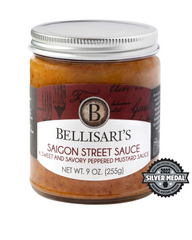
It’s Spring, and it’s the season for one of my favorite vegetables -- asparagus! Although it is available year-round, spring is the best season for this nutritious vegetable. Crops are harvested from late February to June, with April being the prime month and high season for asparagus.
Whether it’s from the grocery store or a local farmer’s market, I am always looking for the best deal on fresh fruits and vegetables. We all live for convenience especially when it comes to food and our health, but just like the myth that healthy eating is expensive, many people believe that buying in-season fruits and vegetables is just too much hassle even though the good reasons to do so abound!
Food always tastes better when it’s fresh, but purchasing seasonal veggies gets you more than just great taste. It’s also a great time to save some cash. When certain foods are in season, the relative abundance of these crops usually makes it less expensive.
Fresh asparagus will be bright green with no signs of shriveling. The tender tips may have a purplish cast, but they should be firm and tight, never mushy. The cut end will be thick and fibrous—the plant’s reaction to the injury of cutting. This end is broken off before cooking, but if the shoots are fresh, you may lose only an inch.
Asparagus is a nutritional giant containing more folic acid than any other vegetable. It is also a source of fiber, potassium, vitamins A and C and glutathione, a phytochemical with antioxidant and anticarcinogenic properties.
I like to cook asparagus the day I buy it, but you can place asparagus in a produce bag in your vegetable drawer; however, it’s more likely to get bruised, broken, or left too long. To keep asparagus in prime condition, trim the cut ends, stand them in a glass of water, cover with plastic, and refrigerate (glass and all) for up to two days.
One of the beauties of these elegant spears is their versatility. Roasted, steamed, boiled, grilled, even raw – asparagus can be prepared and eaten in a multitude of ways. First, thoroughly wash the asparagus. You don't want to soak it; just hold the stalks upside down under cold water and shake them a bit to release any sand that might be caught in the tips. Then hold both ends of each spear and bend; the tough, fibrous base should snap right off. (This step is unnecessary in thinner spears, which are completely edible.) Then, pick one of many easy ways to prepare this delicate spring treat.
A little olive oil and salt are all that are needed to season asparagus, but it is often served with a sauce. The classic sauce to serve with asparagus is hollandaise sauce which has a rich creamy texture and a lovely tang to it that complements the flavor of the asparagus, but any number of sauces and flavors could accompany it. Asparagus is also perfect as a vegetable in pasta dishes, soups, and salads. Check out our recipe for Chilled Orzo & Asparagus Salad here: https://bit.ly/2FZ4vaw if you’re looking for a new way to prepare this Spring superstar!






